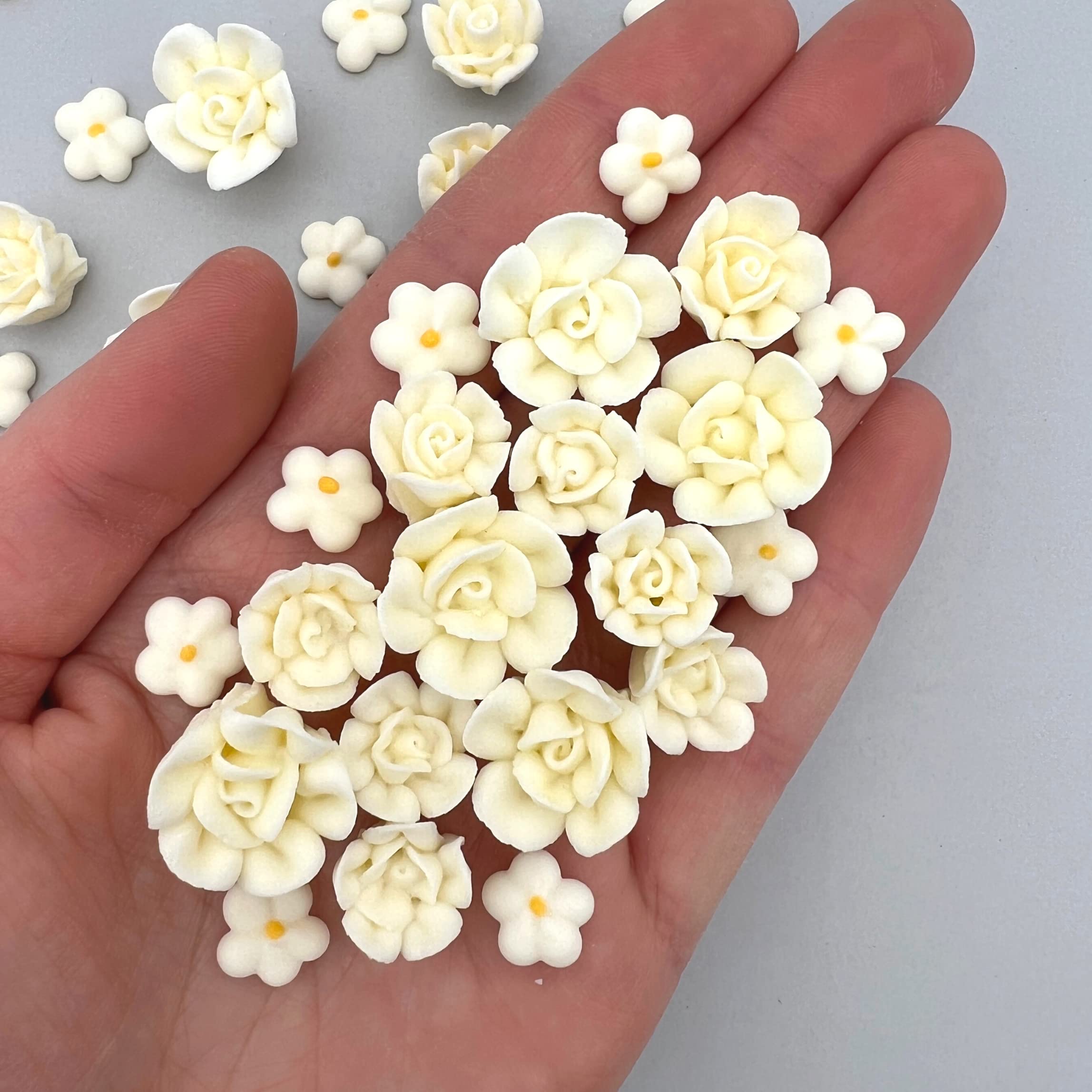Delightful White Blooms: A Guide to Edible White flowers for Cakes
White flowers have a timeless elegance, making them a popular choice for decorating cakes for weddings, birthdays, and other special occasions. Beyond their aesthetic appeal, many white flowers are also edible, adding a delicate flavor and unique touch to your creations. This guide explores a variety of edible white flowers, offering insights into their flavor profiles, best uses, and potential considerations.
Understanding Edible Flowers
Before diving into specific white blooms, it’s crucial to understand the basics of edible flowers. Not all flowers are safe for consumption, and even edible varieties may require specific preparation. Always ensure you are using flowers specifically grown for culinary purposes, as those from florists or garden centers may have been treated with pesticides or other chemicals. It’s best to source your edible flowers from reputable suppliers or grow them yourself organically.

Popular Edible White Flowers
Here’s a closer look at some of the most popular edible white flowers perfect for adorning your cakes:
1. Jasmine
Jasmine flowers, with their intoxicating fragrance and delicate white petals, are a classic choice for adding a touch of romance to cakes.

Flavor: Sweet, floral, and intensely aromatic.
2. Elderflower
Elderflowers, tiny white blossoms that grow on elderberry bushes, offer a delicate and slightly sweet flavor.
Flavor: Light, floral, with hints of citrus and honey.

3. Orange Blossom
Orange blossoms, the fragrant flowers of orange trees, are prized for their sweet and citrusy aroma.
Flavor: Sweet, floral, and citrusy.
4. Rose
White roses, while often associated with romance, are also edible and offer a delicate floral flavor.
Flavor: Subtle floral, slightly sweet.
5. Gardenia
Gardenias, with their creamy white petals and captivating fragrance, are a beautiful addition to cakes.
Flavor: Sweet, floral, and slightly spicy.
6. Lilac
White lilacs, with their delicate blooms and sweet scent, can add a touch of springtime to your cakes.
Flavor: Sweet, floral, with a slightly herbaceous note.
7. Daisy
Daisies, with their simple yet charming appearance, are a classic choice for decorating cakes.
Flavor: Slightly tangy, nutty.
8. Pansy
Pansies, with their vibrant colors and delicate petals, are a popular choice for cake decorating. While many pansies are multicolored, white varieties are also available.
Flavor: Mild, slightly sweet, sometimes with a subtle grassy note.
9. White Violet
White violets, with their delicate blooms and sweet fragrance, are a beautiful addition to cakes.
Flavor: Sweet, floral.
10. Magnolia
Magnolia blossoms, while large and showy, are also edible, though only the petals are typically used.
Flavor: Slightly spicy, ginger-like.
Preparing Edible Flowers for Cakes
Once you’ve chosen your edible white flowers, proper preparation is key to ensuring they are safe and enjoyable to eat:
Identification: Double-check the identification of your flowers to ensure they are indeed edible.
Using Edible White Flowers on Cakes
Edible white flowers can be used in a variety of ways to decorate cakes:
Fresh Garnishes: Simply arrange the flowers on top of the cake for a beautiful and natural look.
Conclusion
Edible white flowers offer a beautiful and delicious way to enhance your cakes. From the fragrant jasmine to the delicate daisy, these blooms add a touch of elegance, flavor, and whimsy to your creations. By understanding the specific characteristics of each flower and following proper preparation techniques, you can create stunning cakes that are as delightful to eat as they are to behold. Remember to always prioritize safety and use flowers specifically grown for culinary use. With a little creativity and care, you can transform your cakes into edible works of art.
edible white flowers for cakes
